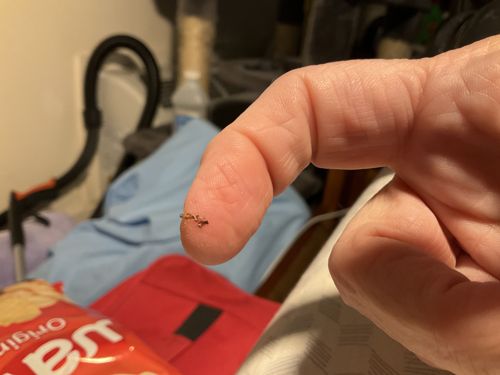Pharaoh Ant
Scientific Name: Monomorium pharaonis
Order & Family: Hymenoptera, Formicidae
Size: Workers are typically 1.5 to 2 mm (0.06 to 0.08 inches) long, pale yellow to reddish-brown, with a darker abdomen.

Natural Habitat
Primarily indoor pests, commonly found in warm, humid environments such as homes, hospitals, food establishments, and other commercial buildings. They nest in wall voids, insulation, under floors, in appliances, and behind baseboards.
Diet & Feeding
Omnivorous, feeding on a wide variety of foods including sweets, greasy foods, proteins, and even other insects. In hospitals, they are known to feed on wound dressings and intravenous fluids.
Behavior Patterns
Pharaoh ants live in large colonies with many queens, often splitting into smaller satellite colonies (budding) when disturbed. They are highly adaptive and can nest in inaccessible areas, making them difficult to eradicate. They forage for food and water in trails.
Risks & Benefits
Pharaoh ants are considered significant nuisance pests and can contaminate food products. In healthcare settings, they pose a serious risk as vectors of pathogens, spreading bacteria such as Salmonella and Staphylococcus from contaminated areas to sterile environments, posing a threat to patient health. They offer no known benefits to humans or the ecosystem in their role as indoor pests.
Identified on: 8/18/2025